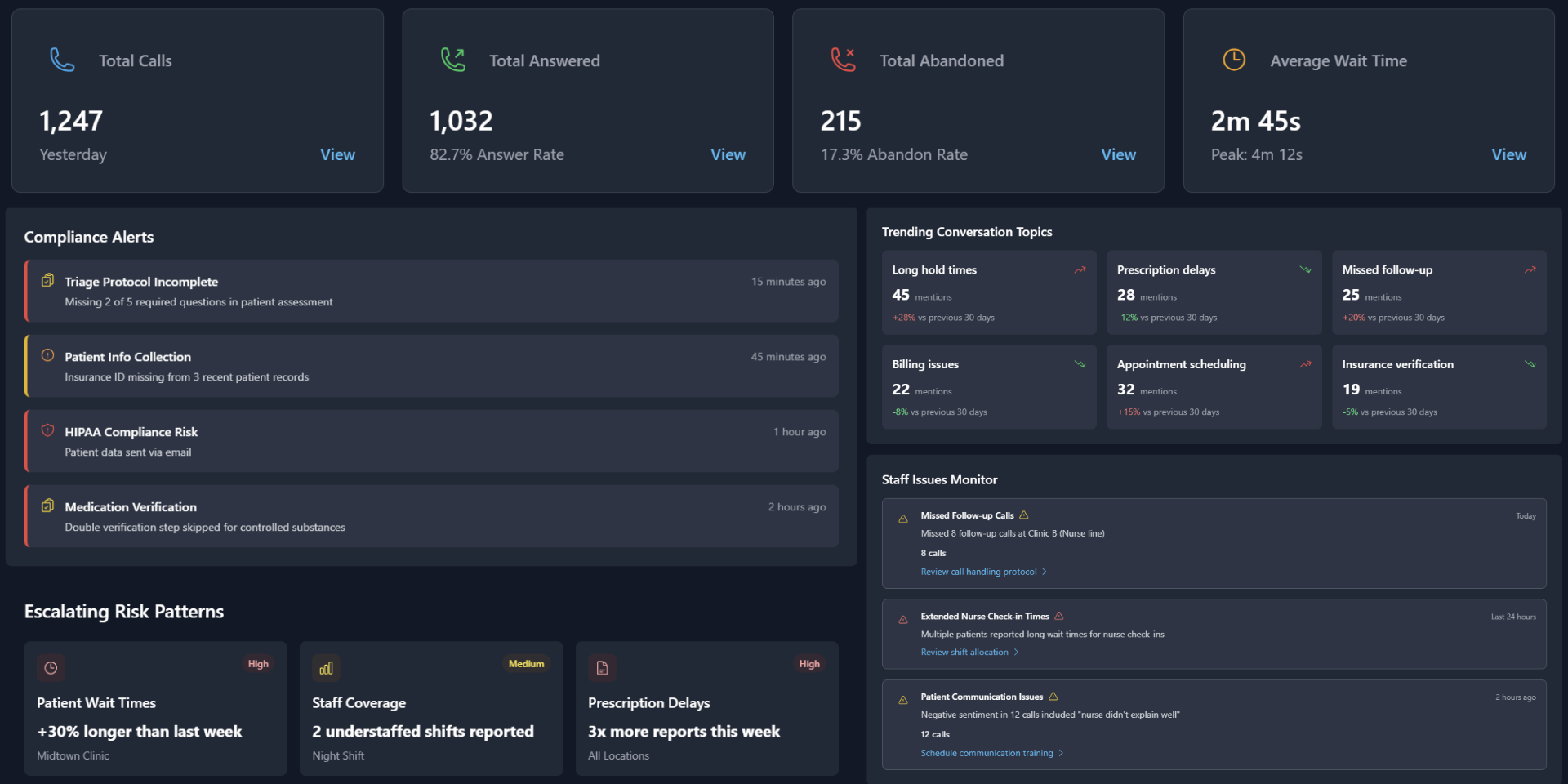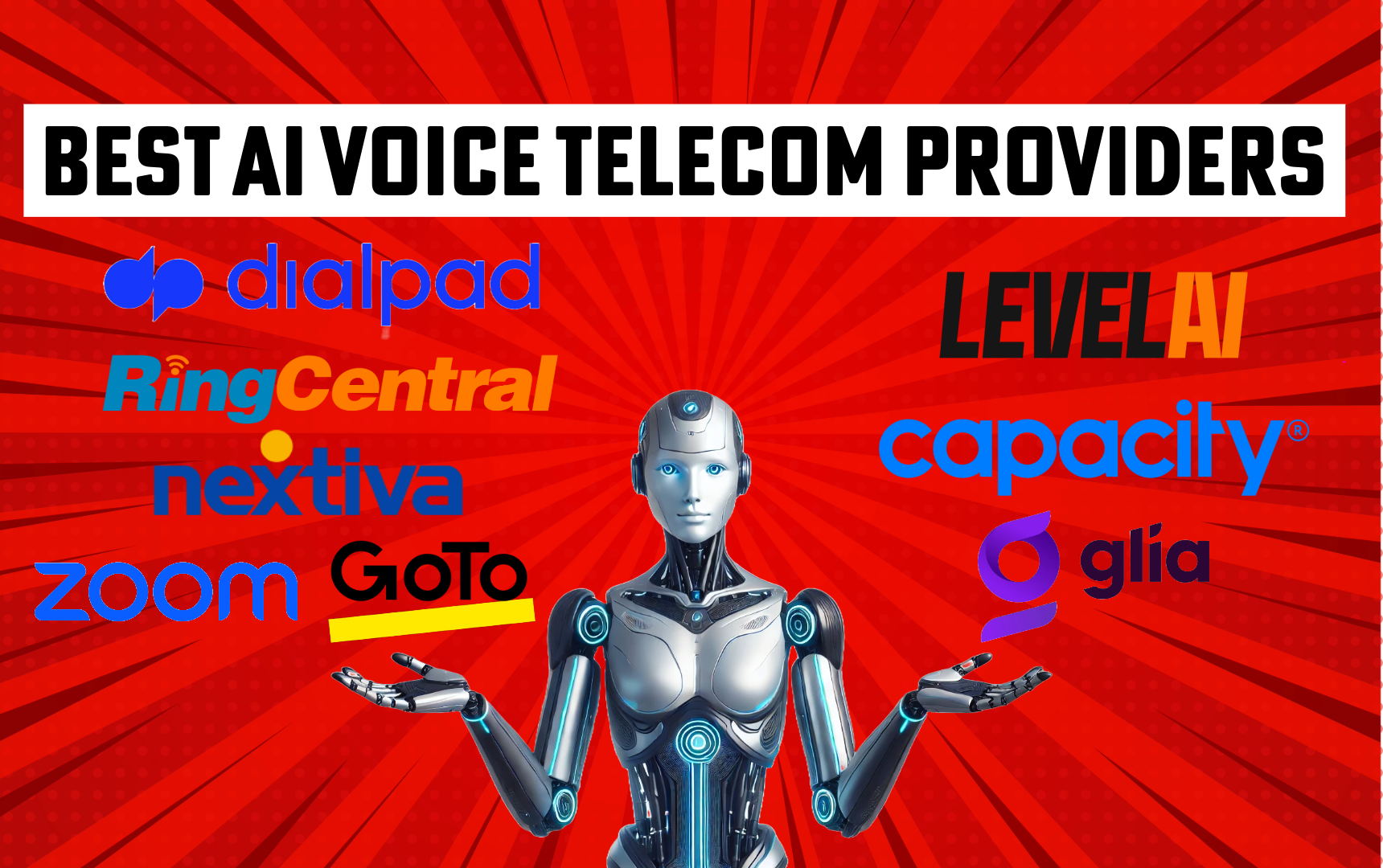What Are vCons? The New AI Standard for Business Conversations
Updated: August 6th, 2025 | Published: April 9th, 2025
6 min read
By Will Maddox

vCons, or Virtualized Conversations, are structured, portable, AI-ready files that capture the full context of a business interaction, including audio, video, chat, metadata, sentiment, and more. Think of them like the PDF of conversations. As open, standardized data objects, vCons solve major issues like AI amnesia, data silos, and compliance risks while enabling new applications in sales, support, training, and analytics.
Are you capturing the full value of your customer conversations, or are they vanishing into thin air the moment the call ends?
In a recent webinar hosted by Creo Solutions, thought leaders from across telecom, AI, and customer experience came together to explore the potential of vCons. TeleCloud's President, Damon Finaldi, was featured as a real-world case study, sharing how TeleCloud is actively starting to implement vCons and uncovering the different ways they can be used, from sales coaching to support analytics to training and beyond.
If you missed the live event, no worries, you can rewatch the recording or just keep reading!
vCons are new, and we’re all still learning. But what’s clear is this: vCons are poised to become the new standard in AI-powered communication, bringing structure, memory, and meaning to every customer interaction.
In this article, we’ll break down what vCons are, how they work, and how businesses like TeleCloud are already putting them to use.
Table of Contents
- What Is a vCon? (Virtualized Conversation)
- Why Now? vCons and the Future of Conversation Intelligence
- What Problem Do vCons Solve?
- Why vCons Outperform Recordings and Transcripts
- Real-World Use Cases: What’s Possible with vCons?
- Why 2025 Is a Turning Point for Service Providers
- 3 Ways to Get Started with vCons
- FAQ
What Is a vCon? (Virtualized Conversation)
A vCon (short for virtualized conversation) is an open standard designed to capture the full context of a human interaction—voice, video, chat, text, or email—into a single, structured, portable, and secure file.
Think of it as the PDF of conversations. Just like a vCard stores contact details or a calendar file stores event info, a vCon captures all the key elements of a conversation:
- Participants & Consent – Who was involved, when it happened, and whether consent was given
- Content – Transcripts, audio, or video recordings
- Metadata – Timestamps, channel type, conversation purpose
- AI Analysis – Summaries, red flags, sentiment, topic detection
- Attachments – CRM data, documents, contracts, call notes
vCons are written in JSON, making them machine-readable, tamper-proof, encryptable, and interoperable across systems. They aren’t just for storing conversations; they’re for understanding, sharing, and protecting them.
Why Now? vCons and the Future of Conversation Intelligence
Every major leap in communication has been driven by open standards:
|
Year |
Innovation |
What It Changed |
|
1993 |
HTML |
Turned websites into readable docs |
|
1999 |
SIP |
Standardized voice over IP (VoIP) |
|
2023 |
GenAI |
Changed how content is created |
|
2025 |
vCons |
Create AI-accessible memory for every conversation |
2025 marks the year when conversations become structured, portable data. Just as SIP allowed voice to scale across the internet, vCons unlock new possibilities for AI, analytics, compliance, and collaboration across every channel.
What Problem Do vCons Solve?
Despite all the advancements in AI and conversational platforms, we’re still falling short when it comes to harnessing the full value of customer interactions. Why? Conversations are still treated like fleeting events: unstructured, siloed, and difficult to act upon.
vCons (Virtualized Conversations) solve this by turning conversations into structured, portable, privacy-first data objects that unlock new possibilities across AI, compliance, and business operations.
Here’s a breakdown of the major problems vCons solve and why it matters:
1. AI Amnesia: Conversations Are Forgotten After They Happen
AI systems can chat, summarize, and analyze, but they can’t remember. Once a customer conversation ends, the insight is gone unless it’s manually captured or re-fed into the system.
vCons fix this by creating persistent, structured memory for AI.
Each vCon becomes a machine-readable “memory file,” allowing AI to reference past conversations, learn over time, and improve responses without retraining from scratch.
2. Unstructured, Messy Transcripts Make AI Training Inefficient
A transcript alone isn’t enough. It’s just raw words: no context, no redaction, no associated metadata. This makes AI models harder to train and less accurate.
vCons are AI-ready from the start.
They include timestamps, speaker identity, summaries, sentiment scores, and even consent tracking, ensuring high-quality, structured data that machine learning systems can rely on.
3. Conversational Data Is Trapped in Silos
Your call recordings sit in one tool. CRM notes in another. Chat logs, emails, and video calls are stored across disconnected systems.
vCons unify this data into a single, portable format.
Instead of being locked into a proprietary vendor’s platform, your business gets one structured record—voice, video, text, participants, attachments—all in one vCon.
4. Compliance Risks Are Sky-High Without Data Visibility
When you record a customer’s voice or image, you’re capturing highly sensitive personal data. Regulations like GDPR and CCPA require that businesses know where that data is, who has access, and how to delete it if needed.
vCons make data governance possible.
Because each vCon includes metadata about the conversation and its participants, businesses can meet compliance standards by tracking, managing, and deleting data on demand, something most platforms today can’t do.
5. Model Retraining Is Expensive When Data Can’t Be Traced
If a customer revokes consent, you may be legally obligated to remove their data and retrain any AI models that used it. Without knowing what data went into which models, this can be expensive and nearly impossible.
vCons track data lineage.
You know exactly which vCons were used to train which models, making compliance not only possible but cost-efficient.
6. Conversations Aren’t Treated Like First-Class Digital Objects, Yet...
We have vCards for sharing contacts, iCal for calendars, yet until now, there’s been no standard for packaging conversations in a reusable format.
vCons make conversations first-class digital citizens.
With a standardized structure backed by the IETF (Internet Engineering Task Force), vCons allow conversations to be shared, stored, redacted, and analyzed, just like any other critical business data.
7. Innovation is Stalled by Proprietary Silos
Just as SIP and APIs democratized voice and messaging for developers, vCons will democratize conversation data for an entirely new class of builders.
vCons open the door to an innovation ecosystem.
By freeing up structured conversation data, vCons allow developers, AI vendors, and solution providers to build tools for coaching, compliance, sentiment analysis, real-time alerts, and more, without needing to own the communications platform itself.
Why vCons Outperform Recordings and Transcripts
|
Feature |
Call Recordings |
Transcripts |
vCons |
|
Structured AI-Ready Format |
No |
No |
Yes |
|
Built-in Consent & Privacy |
No |
No |
Yes |
|
Verifiable + Tamper-Proof |
No |
No |
Yes |
|
Compatible Across Platforms |
No |
No |
Yes |
|
Stores AI Analysis & Summaries |
No |
No |
Yes |
Real-World Use Cases: What’s Possible with vCons?
- Auto Dealerships: Save-a-deal diaries, lost lead detection, and “show me who’s shopping other dealers” queries.
- Call/Contact Centers: Alerts for angry customers or missed objections. 100% conversation visibility instead of 5% call sampling.
- Sales Teams: Identify top-performing reps, coach struggling agents, and auto-update CRM fields from conversation content.
- Healthcare: Track patient preferences, automate call summaries, and improve scheduling accuracy without extra admin work.
-1-1.png?width=700&height=647&name=What%20Are%20vCons_%20The%20New%20AI%20Standard%20for%20Business%20Conversations%20-%20visual%20selection%20(1)-1-1.png) Why 2025 Is a Turning Point for Service Providers
Why 2025 Is a Turning Point for Service Providers
“We've recorded millions of calls, but vCons are the first time we can actually use that data to improve the business.” — Damon Finaldi, CEO, TeleCloud
As UCaaS and CCaaS become commoditized, service providers are racing to offer more value. vCons shift the narrative from:
- “We manage your calls” → to “We unlock your customer insights”
- “We provide SIP trunks” → to “We power your business intelligence”
The convergence of Generative AI, Agentic AI, and APIs makes now the time to integrate smarter, compliance-ready conversation data.
3 Ways to Get Started with vCons
- Build It Yourself: Great for large enterprises with deep R&D. But building compliance, consent tracking, and storage from scratch takes time.
- Leverage Open vCon Infrastructure: Use tools like the Strolid Conserver, vCon signals, and Creo Solutions' assistant layer to build fast and securely.
- Accelerate with Turnkey Partners: TeleCloud and Creo will offer out-of-the-box deployment options.
Will You Lead the Conversation Revolution?
Every business conversation contains insight, opportunity, and risk. For years, we’ve recorded those interactions, but without a way to truly understand or act on them at scale. That changes now.
2025 marks a turning point. The organizations that rise above the noise will be those who stop treating conversations as throwaway moments and start treating them as strategic assets.
The question isn’t if conversational data matters. It’s whether you’ll be the one unlocking its value or watching competitors do it first.
At TeleCloud, we partner with service providers to help them evolve from infrastructure providers to intelligence leaders. From resellers of minutes… to enablers of memory.
Ready to move from call recordings to real conversation intelligence? Schedule a free consultation with a telecom expert to learn more.
Frequently Asked Questions (FAQ)
What exactly is stored in a vCon?
A vCon stores conversation content (audio, video, chat), participants, metadata (timestamps, purpose, platform), AI analysis (sentiment, red flags), and consent info, all in one portable, secure file.
Are vCons secure and compliant with data privacy laws?
Yes. vCons are designed to be tamper-proof, encryptable, and consent-aware. They help organizations meet GDPR, CCPA, and other compliance standards.
Do I need special software to use vCons?
Not necessarily. Open-source infrastructure like the Strolid Conserver or platforms developed by Creo and TeleCloud make it easier to integrate vCons into your stack.
Can I use vCons with existing AI tools?
Yes. vCons are machine-readable JSON files optimized for AI/ML systems, making them ideal for training, analysis, and memory-based AI applications.
What industries benefit most from vCons?
vCons are valuable in any industry with high volumes of customer interaction, such as contact centers, healthcare, automotive, legal, financial services, and sales organizations.
Is this standard widely adopted yet?
vCons are gaining momentum and support from IETF and early adopters like TeleCloud, Creo Solutions, and Strolid. Widespread adoption is expected by 2025.
Topics:















